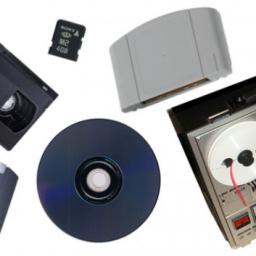
If you've missed the trendwagon for cloud computing, don't worry, it's
already passi(C) . Cisco has been thinking deeply about the limitations of the cloud server approach, which for better or for worse still remains just a variation on the classic server-client relationship.
Modern 3G and 4G cellular networks simply aren't fast enough to transmit data from devices to the cloud at the pace it is generated, and as every mundane object at home and at work gets in on this game, it's only going to get worse. Luckily there's an obvious solution: Stop focusing on the cloud, and start figuring out how to store and process the torrent of data being generated by the Internet of Things (also known as the industrial Internet) on the things themselves, or on devices that sit between our things and the Internet.
Marketers at Cisco Systems Inc. have already come up with a name for this phenomenon:
fog computing. Added bonus: clouds bring rain and unhappy weekends. But fog brings
vampires .
Assuming everyone here is glued to the business end of a computer for most of the working day, you probably spend more time looking at your desktop than you do your kids :( So, where do you get your artwork? I was a big fan of
Digital Blasphemy for many years, and actually I still do like Ryan's stuff. But there are so many good artists out there, and so many great sources of interesting images, from the abstract to the futuristic to the mundane. Where do you go to get interesting artwork?
[Ed note: Don't say 4chan. Please don't say 4chan.]

What do dating sites and research facilities have in common? More than you think, apparently, at least in the case of the Neglected Tropical Disease research, who is increasingly
benefitting from the website technology used by dating sites to encourage sharing and collaboration across research projects. Says Trudie Lang, researcher from the University of Oxford, UK:
Modern technology, such as wiki-style and dating sites software, allows scientists to "organise information in a very clever way", she added. "As scientists, we're rubbish at sharing," Lang said. "Unless we share the methods by which we collect the data, it won't be of much use."
Sounds good to me. It's easy to believe researchers all collaborate in a utopian bubble of sharing and cooperation, until you see what really happens for yourself. Anything that encourages information sharing and careful stewardship of scarce research funding has got to be a good thing, and if that gets a few scientists a date, too, that's just bonus.

Some say this is an awesome time to be a gamer. I don't agree: I'd say things are getting worse, not better. Start with the
freemium model of game development, to which Henry Dowling says,
There's a rancid stench wafting around the gaming industry of late, and it can only be attributed to the advent and subsequent growth of the freemium business model ... Vampiric developers and their publisher overlords sit hunched over analytic spreadsheets, chuckling throatily about nefarious things like coercive monetisation, pay walls and progress gates.
Then, there's the endless patching. Think about it: yes, games are more complex these days, but the
size of patches being shipped out now surpasses the size of the games themselves back in the day. Erik Fredericksen writes,
This isn't cleaning up code or fixing minor functionality issues, this is modifying massive parts of games. This is delivering the passenger seats a month after I bought the car.
And don't even get me started on gaming culture. Wired has just published a
highlight on online harassment . For starters, just look at
all the abuse one female gamer has collected in a couple years of playing.
It all might just make you
nostalgic for 1994 again , when everything was OK and 16 bits were all you needed.

Almost everyone has dealt with those annoying little
buggers that like to bite and suck your blood during the summer months. In less fortunate parts of the world the situation is much more serious with the dangers of blood borne pathogens such as malaria. The mainstay has been to distribute and use mosquito
nets .
After seeing earlier in the week what some people are trying to do with solar power and roadways, I ran across this cost effective
device which helps stop the spread at the source and save lives.
It's not
the Terminator , but it's a start.
Military robots are here, and they're taking an increasingly important role in modern warfare . The folks at Vox write:
The armed robots issue is becoming so real, so fast, that 87 countries sat down at a United Nations-convened conference from May 13th to the 15th to discuss banning the things. Those nations, including Russia, China, and the United States, discussed amending the UN Convention on Certain Conventional Weapons, which 117 countries have accepted, to prohibit the use of armed robots during wartime. A lot of the news coverage on this issue has treated robot arms control as if it's a joke or a novelty. It's neither: For over a year, Human Rights Watch has been building a campaign to pressure for banning military robots, arguing that they pose an unacceptable threat to civilian populations. Are they right? Should we be banning what HRW calls "killer robots"?
What's your opinion? Crawl out of your underground bunker/weapons cache and let your fellow Pipeheads hear you. But do it quietly:
the future robots can hear you .

Remember
Greg Chung , the Chinese spy who had infiltrated NASA and was pocketing technology for his nation of birth? It started long before that. Rewind to 2004, when the FBI, reeling from its failure to make a conviction in a previous case, was trailing Chi Mak,
a Chinese national now sporting an American passport who was working for Power Paragon, a US Navy defense contractor in California. The agents assembled the contents of the bag like a jigsaw puzzle. Patched together, the pieces constituted two documents, one handwritten and the other machine-printed. Gunnar Newquist, an investigator assigned to the case by the N.C.I.S., spotted an English phrase at the bottom of the handwritten sheet. "DDX," he said, reading it aloud. "That's a Navy destroyer." The handwritten text turned out to be a list of naval technologies and programs: submarine propulsion networks; systems for defending against nuclear, chemical, and biological attacks; and others. On the printed sheet were instructions about going to conferences to collect information. Gaylord was certain that the two documents were tasking lists from Chinese intelligence.
A great read over at the New Yorker, and a reminder that sometimes a bit of paranoia is a good thing: you may be right.

Georgio Venturi over at the Ubuntu User Experience Blog posits that the browser as we currently know it
can't go on in the smartphone age . OK, fair enough: a traditional browser on a smartphone isn't going to be a great experience.
With the unstoppable rise of mobile apps, some pundits within the tech industry have hastily demoted the mobile web to a second-class citizen, or even dismissed it as 'dead'. Who cares about websites and webapps when you can deliver a superior user experience with a native app? Well, we care because the reality is a bit different. New apps are hard to discover; their content is locked, with no way to access it from the outside. People browse the web more than ever on their mobile phones. The browser is the most used app on the phone, both as starting point and a destination in the user journey.
Venturi goes on to describe innovations to the
Ubuntu phone browser interface that make it more useful. Not exactly the only new browser out there though, so I don't get all the fuss.
LinkBubble ,
Opera ,
Dolphin , and others all make alternative browsers that try to improve the user experience on a phone. Why all the hubbub?

You were wondering why your cable TV bill seems to be out of control? Because it is. That's the conclusion of a major FCC study that has just ended: the price of cable packages has been rising at
triple the rate of inflation . From the study:
[B]asic cable prices increased by 6.5% throughout 2012 while expanded basic cable prices rose by 5.1% over the same period. In contrast, the general rate of inflation as measured by the Consumer Price Index throughout 2012 was just 1.6%, meaning that basic cable prices rose at more than four times the rate of inflation in 2012 while expanded basic cable prices rose by more than three times the rate of inflation.
Sound bad? It gets worse. Keep reading over at
BGR , and then take the TechCrunch
Four Step Plan for cutting the cord. Screw you, cable.
 If you've missed the trendwagon for cloud computing, don't worry, it's already passi(C) . Cisco has been thinking deeply about the limitations of the cloud server approach, which for better or for worse still remains just a variation on the classic server-client relationship.
If you've missed the trendwagon for cloud computing, don't worry, it's already passi(C) . Cisco has been thinking deeply about the limitations of the cloud server approach, which for better or for worse still remains just a variation on the classic server-client relationship.





